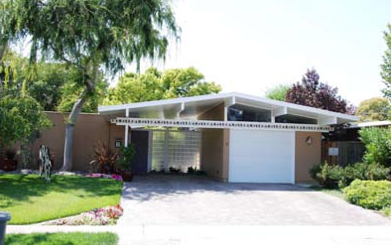
California icon meets energy realities:
The houses of Joseph Eichler typically included roof beams that extended through exterior walls, creating a tricky detail for modern builders.Image Credit: City of Sunnyvale, CA
In Dallas, Texas, Marc Kleinmann is working on plans for a house which the owner wants to look like the the iconic designs by California developer Joseph Eichler: lots of glass, a low-sloped roof, and roof beams that penetrate the exterior walls to support a broad roof overhang.
That style was all well and good back in the 1950s and ‘60s, but with our keener interest in energy efficiency, Kleinmann wonders in this Q&A post at GreenBuildingAdvisor whether it really makes much sense.
“Don’t know yet if those are going to be structural or not,” he writes of the protruding beams, “but either way I have can see some issues with several large 16-in. beams continuing from interior to exterior.”
He adds that while the beam detail could be designed so they did not actually penetrate the wall, “I can see lots of headaches with that method, too.”
It’s an interesting problem, and it leads to the larger question of aesthetics over practicality in modern architecture: Is the California Modernist style merely a “relic” of the age of cheap oil? That’s the focus of this week’s Q&A Spotlight.
One problem is thermal bridging
As Armando Cobo points out, many architectural styles have included beams that extend out from the house this way. One problem is thermal bridging, which is a path for thermal loss due to the lower R-value of wood versus cavity insulation, such as cellulose or polyurethane foam.
Cobo has several suggestions: First, stop the beams or timber trusses at the outside edge of the wall, install rigid foam insulation over the sheathing and then install faux beams on the outside. “It’ll help you with the thermal…
Weekly Newsletter
Get building science and energy efficiency advice, plus special offers, in your inbox.

This article is only available to GBA Prime Members
Sign up for a free trial and get instant access to this article as well as GBA’s complete library of premium articles and construction details.
Start Free TrialAlready a member? Log in





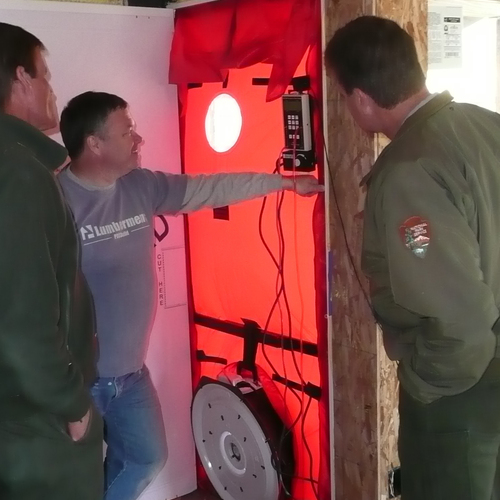
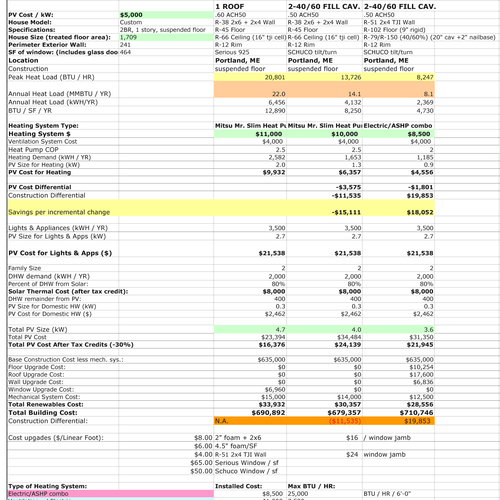
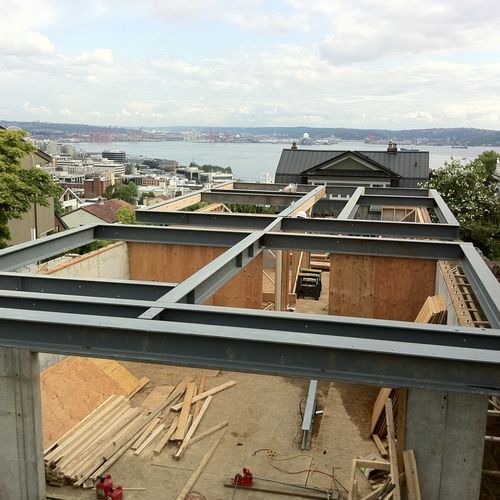
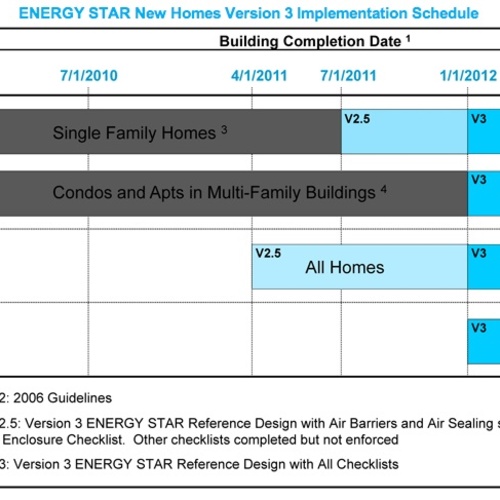






2 Comments
This seems like a tempest in
This seems like a tempest in a teapot. The typical gable end would have 3,5 or 7 penetrations, widely spaced. The r-value of a few inches of wood is probably better than the adjacent glazing, especially since the wood extends inward and outward.
In a glass wall the posts and beams also take the role of sash (I'm not sure of the term -- glass is mounted directly to framing), which is poor r-value anyways.
The main problem I can see with Eichlers is the "thin roof" look. Adding inches or feet of insulation to the roof can be architecturally disruptive.
Energy Efficient Eichler in Monte Sereno, California
We are undertaking a renovation and new construction of our Eichler home, which was built in 1969. We are renovating the ground floor of the home and adding a complete lower level (basement) through new construction.
We reduced the number of structural beams penetrating the exterior front/rear of the house from 8 to 6. At the same time, we covered the atrium and used R-47 SIPs on the flat roofs and gable roofs. The flat roofs were covered with polyiso tapered foam, averaging 3 inches, with a white TPO to reduce the solar gain. The gable roofs were covered with yellow cedar shakes, with a high albedo (and durability) to reduce solar gain, as compared to red cedar shakes. On the East/West walls, we cut the beams in two and added 2 inches of foams to make insulated headers, which reduces the thermal bridging.
The house utilizes a ground source heat pump (geothermal heat exchange) through a 2,800 ft ground loop. As well, there will be 48 215-watt photovoltaic panels on the roof to generate electricity.
In constructing the lower level (basement) under the existing house, we added 1.5 million lbs of concrete. All of the concrete was insulated to at least R-10. The existing exterior walls were increased from 4x to 6x and the resulting structure exceeds (is better than) California's Title 24 by 72.9% (and the California Energy Commission verified the calculations through the Energy Pro model).
Our plans and other information are on our 'construction blog', at http://www.EichlerVision.com.
Log in or become a member to post a comment.
Sign up Log in